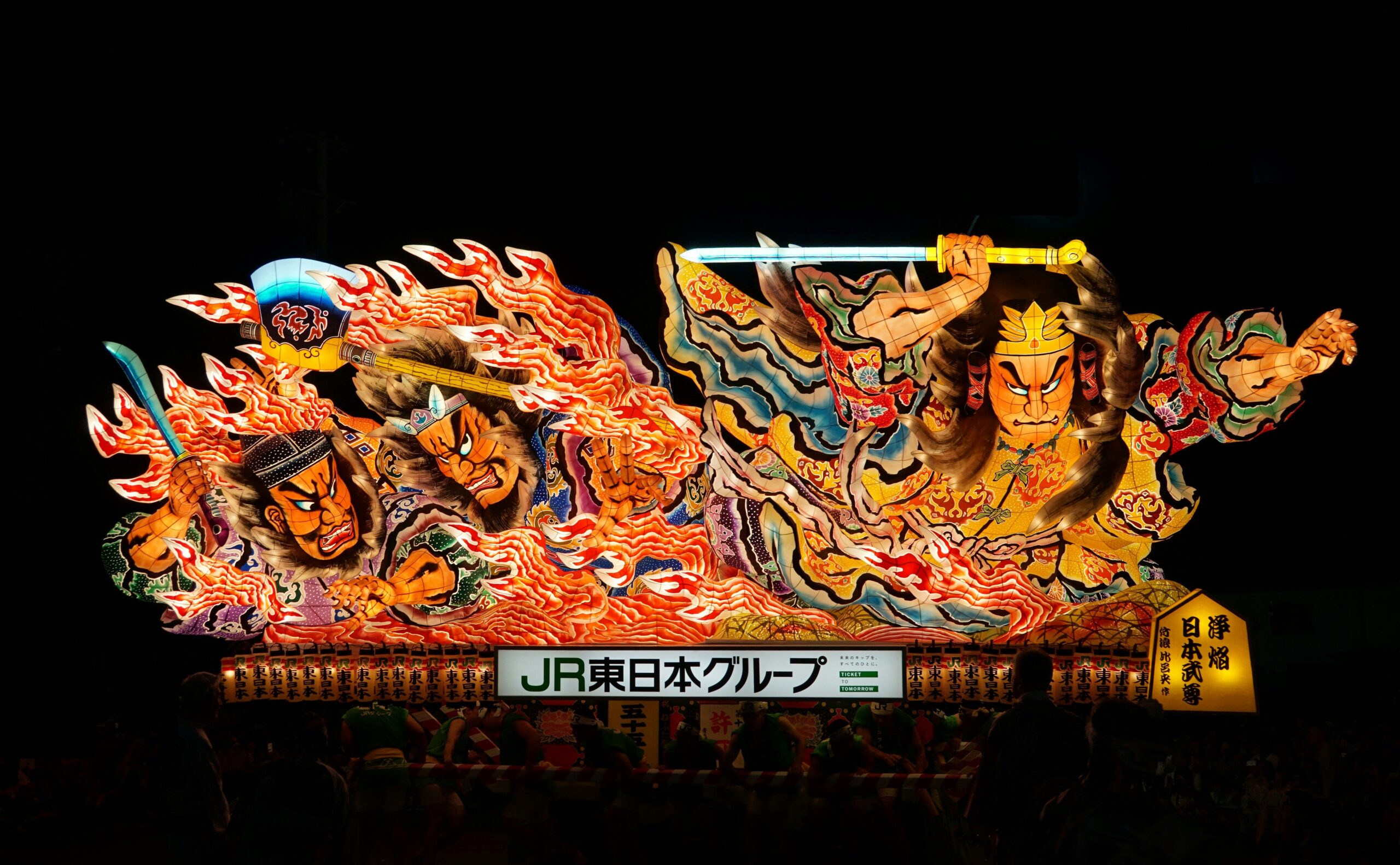One summer day, when a business trip in Tokyo wrapped up earlier than expected, a sudden impulse struck me: I want to go north. It was a vague but irresistible urge. I’d heard that Aomori’s famous Nebuta Matsuri—a festival where massive illuminated floats parade through the streets—was just beginning. People said it filled the brief northern summer with fire and passion.
Aomori sits at the northernmost tip of Honshu, Japan’s main island, just across from Hokkaido. Acting on instinct, I boarded the bullet train, and after three and a half hours, I stepped off at Aomori Station. The breeze that greeted me outside was cooler than in Tokyo, but there was a lingering warmth in the air—summer, undeniably alive.

My first stop was Nebuta no Ie Wa Rasse, a museum within walking distance of the city center. The building’s vivid red façade was hard to miss. Inside, I was met by several enormous floats—nebuta—each one more powerful than I had imagined. Legendary warriors, demons, and characters from history and myth loomed before me, crafted in three-dimensional form from vibrantly colored washi paper and lit from within. These weren’t just decorations. They were vessels of spirit—art born of something deeper.
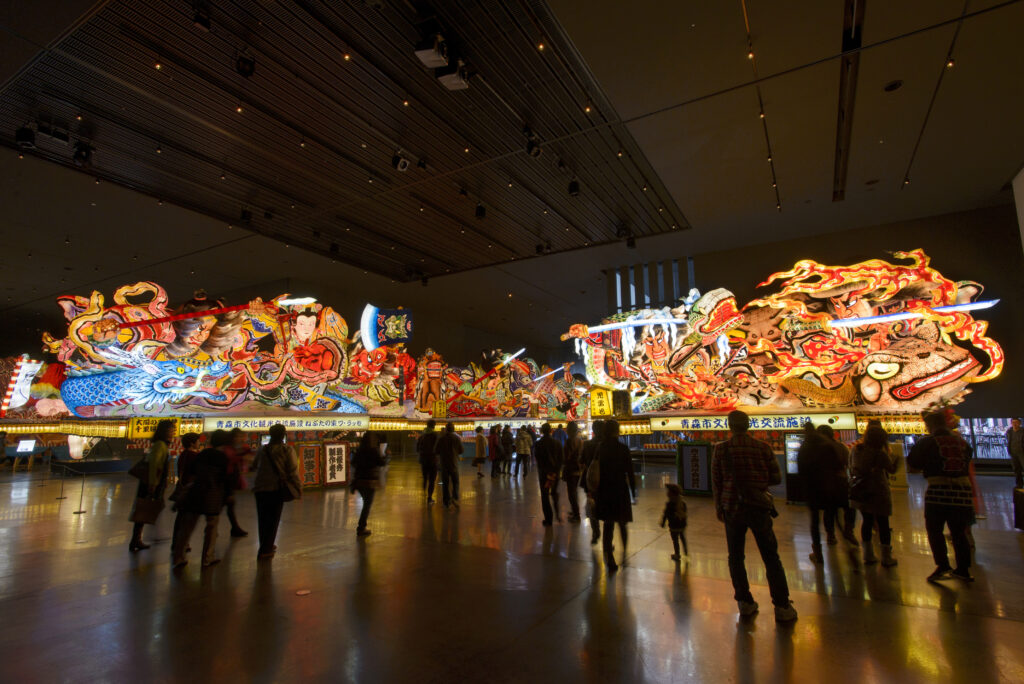
That night, as I wandered the streets, I happened upon an elderly man. His tanned skin was weathered, his eyes sharp beneath a white headband. He wore a deep indigo happi coat—a traditional festival garment. Our eyes met, and he smiled.
“Here to see the festival?” he asked.
“It’s my first time seeing Nebuta,” I replied.
He grinned. “Then let me show you around.”
His name was Mr. Kimura. Though nearly seventy, he moved with youthful energy. He told me he was involved in building the floats himself. According to him, the Nebuta Festival traces its roots back to the Heian period, blending traditions like floating lanterns on the river during Tanabata and ancient purification rituals meant to drive away evil spirits.
“We’re not just making floats,” he said. “We’re lighting the soul of the city.”
His eyes burned brighter than the floats themselves.
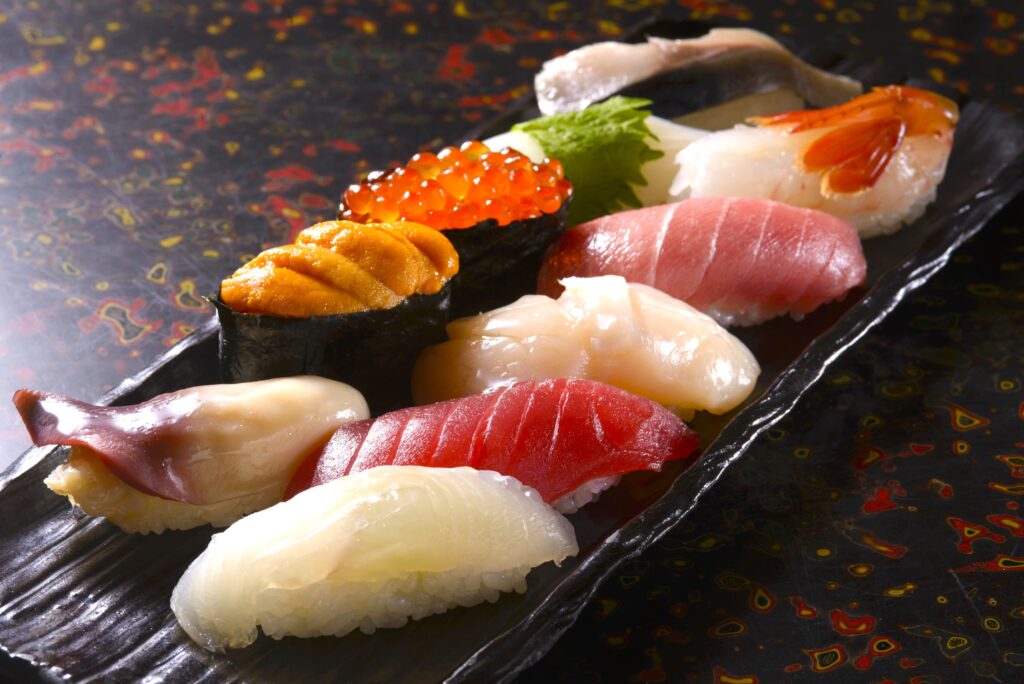
The next day, I had lunch at a small sushi restaurant near Aomori Port—one recommended by the local tourism office as a no-frills spot beloved by residents. The sliding wooden door had clearly seen decades of use. Inside, there was a single L-shaped counter with just seven seats. The lighting was soft, and the chef moved with practiced efficiency that made me sit up straighter without realizing it.
Tuna, flounder, squid—each piece was caught in the nearby sea. They melted the moment they touched my tongue, releasing waves of umami before I could even chew. Most memorable was the lightly seared scallop nigiri. Its gentle smokiness filled my nose, as if the taste itself carried the ocean breeze.
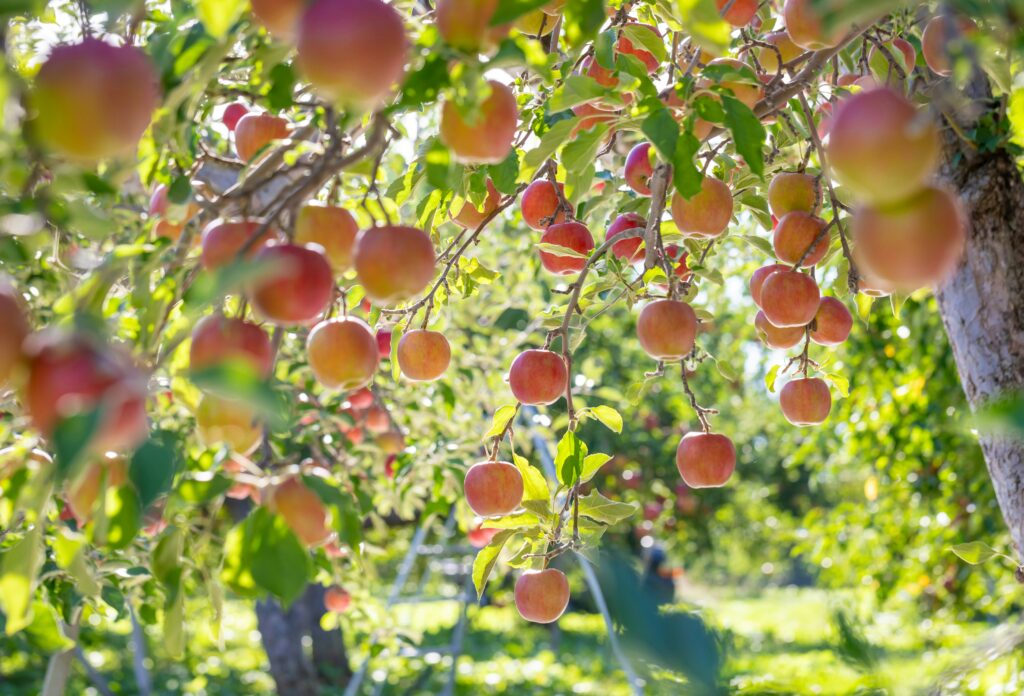
That afternoon, I took a short trip west to Hirosaki, a town famous for its apples. The ruins of Hirosaki Castle have been turned into a sprawling public park, where the vibrant greens of summer made the air feel alive. At a café nearby, I sampled local apple cider—crisp, dry, and chilled to perfection. It was a perfect match for a lazy summer afternoon.

On the morning of my final day, I found a bowl of maguro-don—rice topped with thick slices of raw tuna—at the market in front of Aomori Station. The fish gleamed with a rich sheen, the deep red flesh awakening my appetite. With a touch of soy sauce and wasabi, the flavor burst open in my mouth. Sitting in a corner of the bustling market, surrounded by voices calling out the day’s catch, the dish brought back memories of the people and landscapes I had encountered here.
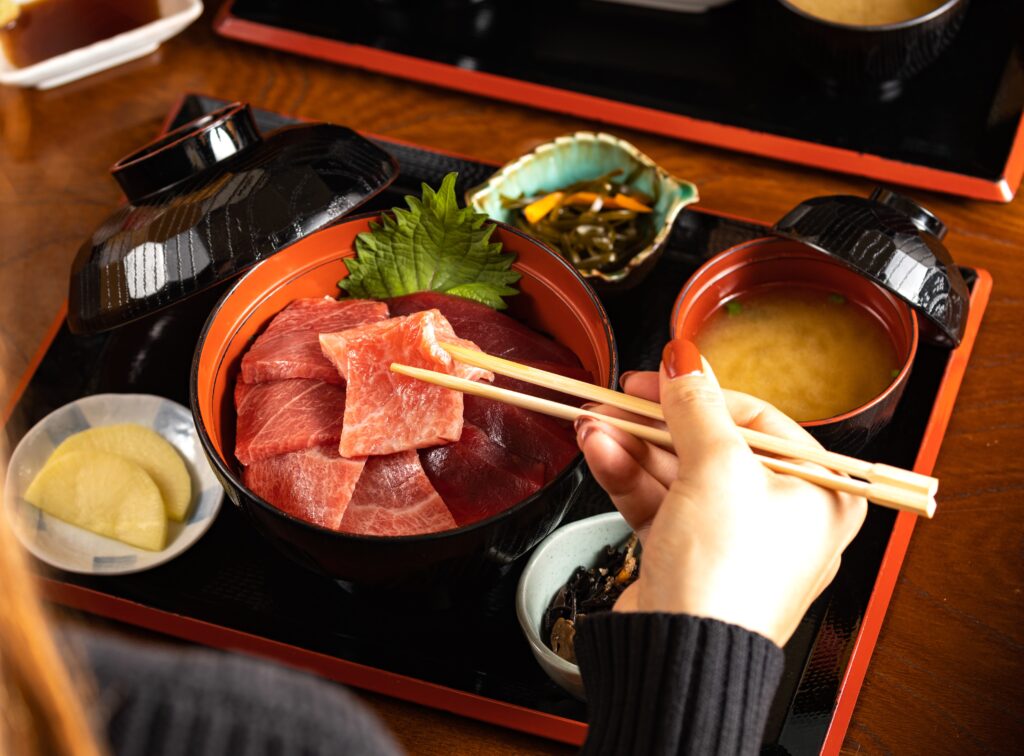
That evening, I stood motionless as the Nebuta lights enveloped me once again. As dusk fell, the city’s energy transformed.
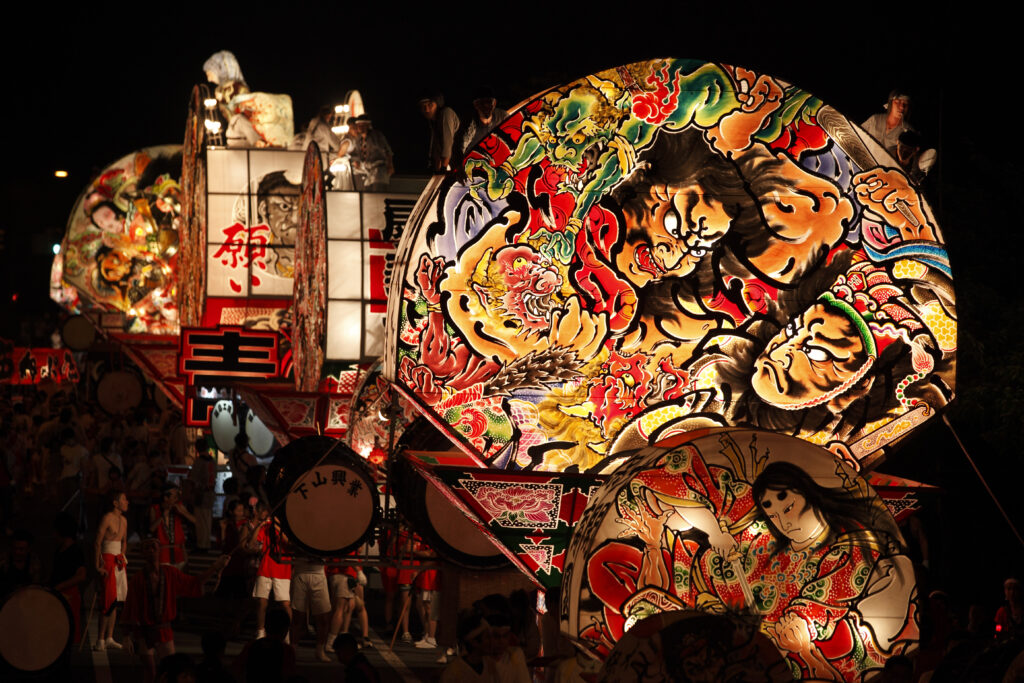
The pounding of drums echoed deep in my chest, while piercing flute melodies cut through the night air. Dancers, known as haneto, moved in a dynamic rhythm—dressed in colorful yukata, bells tied to their waists, they leapt and shouted “Rassera! Rassera!” with contagious joy. Their expressions radiated pride and exuberance, pulling every onlooker into their fervor.
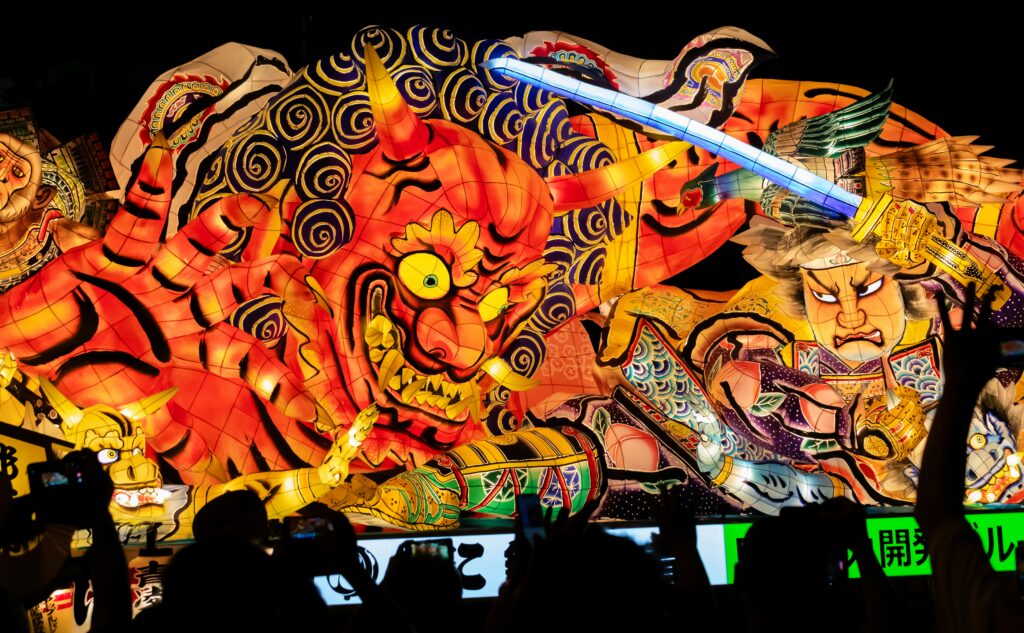
Each time a massive float—depicting fierce warriors illuminated from within—passed by, the crowd erupted in gasps and cheers. The images seemed on the verge of leaping to life. On the floats, musicians played with their whole bodies, sending ripples through the streets. Light, sound, and movement fused into a living pulse. On that summer night in Aomori, the city itself became a beating heart.
And I could feel my own heartbeat joining it. Heat, light, music, laughter, and pride—all of it flowed through the people who call this place home.
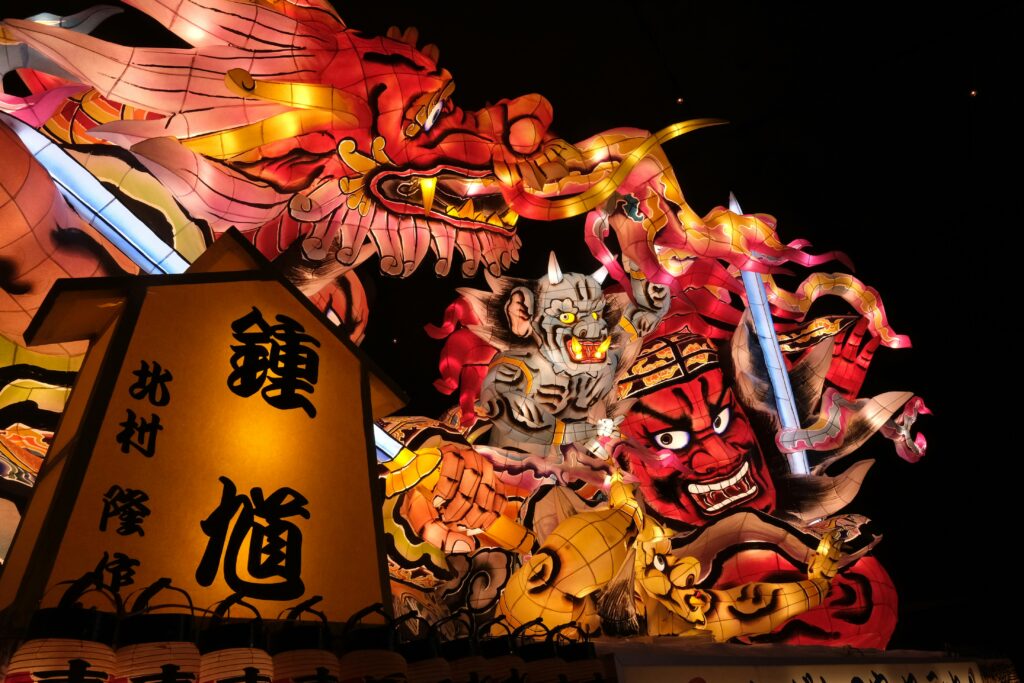
In that whirlwind of energy, I found myself reflecting on the faces I had met—the man who built the floats, the sushi chef slicing fish with care, the farmers tending apple orchards, and the festival volunteers with beaming smiles. Their daily lives might seem ordinary from the outside, but each was infused with deep pride and quiet passion.
The Nebuta lights do more than illuminate the streets. They carry the spirit of tradition and the soul of a people, reaching deep into the hearts of those who witness them. In that heat and brightness, I realized something: tradition isn’t a memory of the past. It’s a living force—fuel for the present.
Something New Travel
★If you’d like to experience the vibrant energy of the festival, you can watch the official Nebuta Festival video by the City of Aomori on YouTube.

